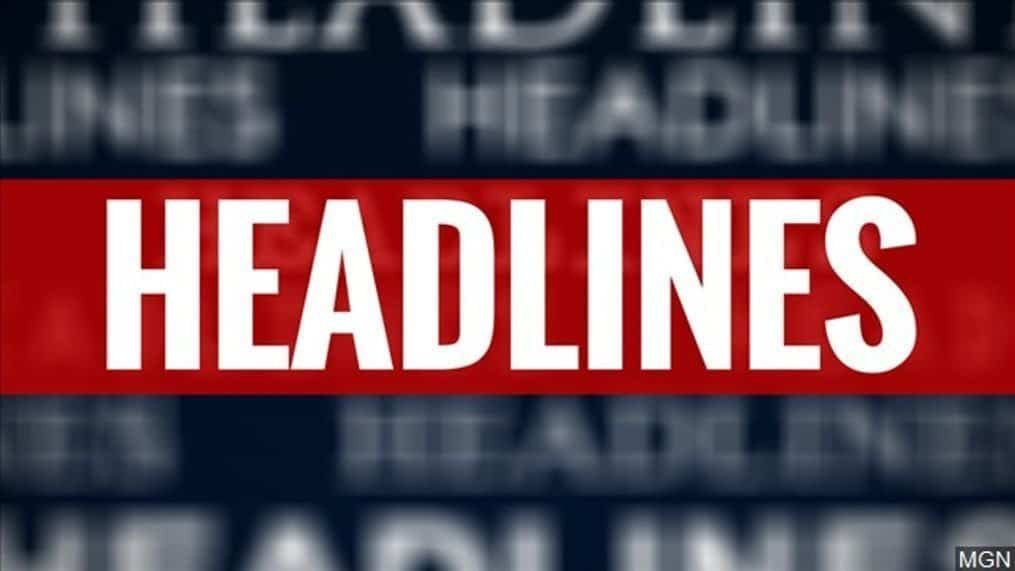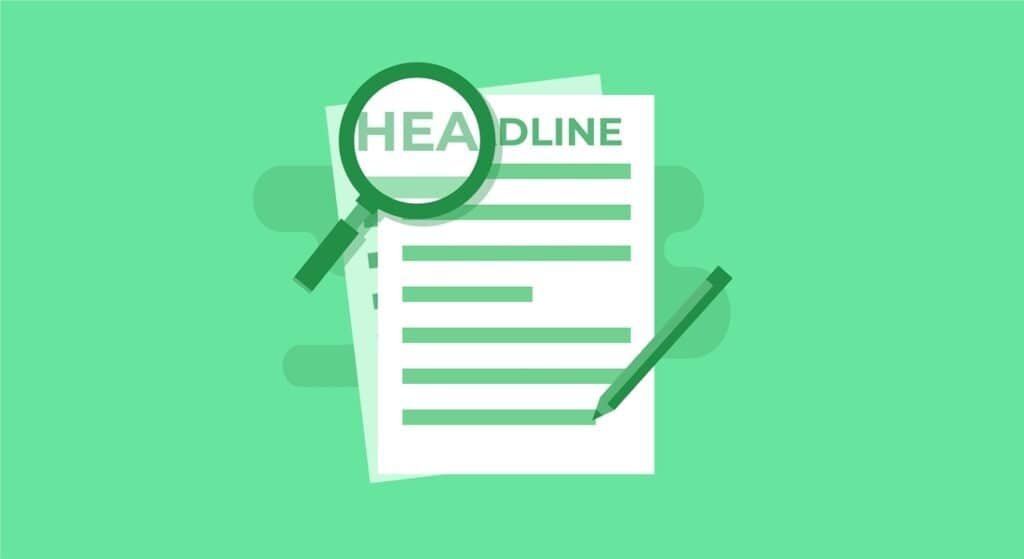Hey man! Are you tired of your content getting lost in the vast sea of the internet? Do you dream of headlines that stop scrollers in their tracks and leave them craving more? Well, guess what? Your dreams are about to come true!
Crafting a killer headline is the single most important thing you can do to make your content stand out. Think about it: your headline is the first (and sometimes only) impression you make on potential readers. It’s your chance to grab their attention, pique their curiosity, and convince them that your content is worth their precious time.
But let’s face it, writing amazing headlines isn’t always easy. It’s a skill that takes time, practice, and a little bit of inspiration. That’s why we’re here to break down the secrets of headline writing and equip you with the tools you need to create headlines that convert like crazy!
The Shocking Truth About Headlines: Why Most People Get Them WRONG
Before we dive into the nitty-gritty of crafting irresistible headlines, let’s talk about why so many people struggle with this crucial element of content creation.
Here are a few common headline mistakes to avoid:
- Being too vague: If your headline doesn’t clearly communicate what your content is about, people will simply scroll on by.
- Trying to be too clever: While a touch of wit can be effective, overly clever or abstract headlines often confuse readers and fail to generate clicks.
- Ignoring your target audience: Your headline should be tailored to the specific interests and needs of your ideal reader.

Headline Formulas That WORK: Steal These Templates for Instant Success!
The good news is that you don’t have to reinvent the wheel when it comes to headline writing. There are tried-and-true formulas that have been proven to work time and time again.
Here are a few of the most effective headline formulas:
- Keyword-based headlines: These headlines use relevant keywords to attract readers searching for specific information. Start your headline with interrogative adverbs like “how,” “why,” “when,” or “where” to pique curiosity and encourage clicks.
- Example: “How to Write Headlines That Will Make Your Content Go Viral”
- Benefits-oriented headlines: These headlines focus on the value proposition of your content and highlight how it will benefit the reader. Use testimonials, tests, or compelling stories to showcase the positive outcomes of engaging with your content.
- Example: “Discover the Secret to Doubling Your Productivity in Just 30 Days!”
- News headlines: Announce something new, exciting, or timely to create a sense of urgency and intrigue. Use words like “introducing,” “announcing,” or “finally” to signal that something important is happening.
- Example: “Breaking News: Scientists Discover a Revolutionary Cure for Procrastination!”
- Price-related headlines: These headlines leverage the power of numbers and discounts to attract deal-seeking readers. Feature the price, a discount, or a special offer to entice clicks. However, use this type of headline sparingly to avoid devaluing your brand.
- Example: “Limited Time Offer: Get 50% Off Our Best-Selling Productivity Course!”
- Extremely short headlines: These headlines create intrigue by being incredibly concise. Use them with caution, as they require a deep understanding of your audience and a knack for conveying a lot with very few words.
- Example: “Productivity Secrets Revealed!”
Get Inside Your Reader’s Head: The Psychology of Irresistible Headlines
To truly master the art of headline writing, you need to understand the psychology behind what makes people click. It’s not enough to simply use a formula; you need to connect with your audience on an emotional level and make them feel compelled to read your content.
Here are five proven ways to get inside your reader’s head and craft headlines that resonate:
- Research past successes: Analyze your previous content to identify headlines that performed well. This will give you insights into what your audience finds engaging and helps you replicate that success in future headlines.
- Monitor audience feedback: Pay attention to the comments, suggestions, and feedback you receive from your audience. This valuable information can guide you in understanding their preferences and tailoring your headlines accordingly.
- Follow industry influencers: Observe how influencers in your niche craft their headlines and engage with their audience. By studying their successful strategies, you can glean insights into what resonates with your target market.
- Conduct surveys: Surveys are a powerful tool for gathering direct feedback from your audience about their headline preferences. Ask about the types of headlines they find appealing, what language they respond to, and what topics they’re most interested in.
- Keep an eye on your competitors: Analyze the headlines your competitors are using, paying attention to both their successes and failures. This competitive intelligence can inform your own headline strategies and help you stand out in a crowded marketplace.
AI: Your Secret Weapon for Headline Inspiration (But Don’t Get Lazy!)
Artificial intelligence (AI) tools can be a valuable asset in your headline writing arsenal, but it’s crucial to use them strategically.
- Don’t rely on AI to generate headlines from scratch: AI-generated headlines often lack the nuance and creativity that comes from human understanding of your target audience.
- Use AI to improve existing headlines: Provide AI with a starting point, such as a headline draft you’ve already created, and ask it to generate variations or make it more engaging.
- Always refine AI-generated headlines: Don’t simply copy and paste the output from your AI tool. Take the ideas it provides and refine them further to align with your brand voice and messaging.

5 Headline Hacks That Will Make You a Click-Bait MASTER
Ready to unleash your inner headline hero? These five tips will take your headlines from good to OMG-I-have-to-click-that!
- Follow the 4 U’s: Make your headlines useful, unique, ultra-specific, and urgent.
- Useful: Provide clear value to the reader and deliver on the promise of your headline.
- Unique: Stand out from the crowd with original language and avoid copying your competitors.
- Ultra-Specific: Use detailed language to target your ideal reader and filter out those who aren’t interested.
- Urgent: Create a sense of urgency to encourage immediate action.
- Start with “I can’t believe that…”: This technique helps you tap into a sense of surprise and intrigue. Write your headline as if you’re sharing something unbelievable, then delete the placeholder phrase for a powerful and attention-grabbing result.
- Pose a funny question: Humor can be a great way to connect with your audience and make your headlines more memorable. Just be sure to keep it lighthearted and avoid anything offensive or sarcastic.
- Use an em-dash, colon, or semicolon: Break up your headlines and create visual interest with punctuation.
- Use rationale-inciting words: Give readers a reason to click by incorporating words like “tricks,” “tips,” “secrets,” or “reasons.”
Don’t Steal Headlines, Steal Headline Structures: Your Guide to Ethical Inspiration
Finding inspiration from successful headlines is a smart strategy, but it’s crucial to do it ethically. Never copy and paste headlines directly – this is plagiarism and could have legal consequences.
Instead, analyze the structure of headlines you admire and adapt them to your own content. Pay attention to the elements they use, such as:
- Numbers: “7 Ways to Write Headlines That Convert”
- Power words: “The Ultimate Guide to Writing Click-Worthy Headlines”
- Questions: “Are You Making These Headline Mistakes?”
- How-to’s: “How to Write Headlines That Get More Clicks”
A/B Testing: The Data-Driven Key to Headline Optimization
No matter how confident you are in your headline writing skills, the only way to know for sure what works best is to A/B test. This involves creating multiple versions of your headline and tracking which one performs better in terms of clicks, engagement, and conversions.
A/B testing tools can help you streamline this process and gather valuable data to inform your headline optimization strategies. By continuously testing and refining your headlines, you can ensure that you’re always putting your best foot forward and maximizing the impact of your content.

Conclusion
Mastering the art of headline writing is an ongoing journey, but by implementing the strategies and tips outlined in this blog post, you’ll be well on your way to crafting headlines that captivate your audience, drive traffic to your content, and ultimately, help you achieve your content marketing goals.
Remember: your headline is your first impression. Make it count!
FAQs
How long should my headlines be? While there’s no magic number, aim for headlines that are concise and easy to read. A good rule of thumb is to keep them under 60 characters to ensure they don’t get truncated in search engine results.
What are some power words I can use in my headlines? Power words evoke emotion and create a sense of urgency. Some effective power words include: amazing, secret, discover, proven, ultimate, exclusive, now, limited time, and free.
How often should I A/B test my headlines? It’s a good idea to A/B test your headlines regularly to continuously improve their performance. Aim to test different variations at least once a month, or more frequently if you’re publishing content on a regular basis.

